
|   |

|   |
 e-mail: ukb7@rediffmail.com Sparkle of Kathak - Gharana or Otherwise July 16, 2017 Indian classical music especially in the north India, with its hoary beginnings, came quickly into a Gharana system in recent times. Venerable gurus, since the last century onwards, established their own preferences in ragas, modes of melodic elaborations and nuances in improvisations. Over next two or three generations, their disciples took their gurus' styles forward and established what came to be recognized as 'Gharanas'. Indian classical dances, comparatively a late starter, did not get time enough to entirely freeze with their gurus for a few generations, though distinctive characteristics emerged. Only Bharatanatyam did evince variations between Pandanallur style and Vazhuvoor style, besides a Kalakshetra style. Odissi developed, for instance mellifluous manifestations associated with guru Kelucharan Mohapatra and tantric overtones with guru Debaprasad Das. Kathakali had its distinct genre of Kerala Kalamandalam, as did Mohiniattam with gurus in Mumbai, Delhi and Kerala. Kuchipudi - moving out of Kuchipudi village - - varied somewhat between Chennai and Hyderabad, if not Delhi. Manipuri from the far-east remained fairly homogeneous in character though gurus from Kolkata and Delhi did occasionally differ from Imphal. Sattriya's entry into the scene was much too recent. But - - barring Bharatanatyam to an extent - no other form had anything remotely resembling Gharanas: except perhaps Kathak. Very briefly, the spectacular entry of Darbari Kathak into the Indian dance scene from Lucknow in the mid-19th century, with its dazzling emphasis on sattvik and angik abhinaya, led by the illustrious Bindadin Maharaj's family and so many others, became known as Lucknow Gharana, followed at the turn of that century, by bold rhythmic syllables of kavit, acrobatic spinning and strong powerful footwork of Jaipur Gharana under Sunder Prasad and a galaxy of other gurus. A late amalgam of Kathak dance under Sukhdev Maharaj and Gopikrishna led to Banaras Gharana, while the king and his conclave of gurus at Raigarh brought up Raigarh Gharana. They all are deservedly called Gharanas, although it so happens that the bulk of gurus and trained Kathak dancers -seen performing - - belong to Lucknow Gharana today, with gurus from the other three Gharanas getting unwittingly a short shrift. The legitimate question voiced by many - - especially those from what could pardonably be called "minority segment" - is whether this is entirely fair, or, whether there can be one single Gharana for Kathak. An all-India survey was undertaken by this humble critic to elicit brief answers from among the country's cognoscente belonging to the Kathak fraternity - especially from among the legendary masters; from renowned gurus and top dancers; and from some brilliant youngsters. The survey obviously could not be exhaustive in a limited time and the views expressed were from the dance exponents themselves. This critic is immensely grateful to the Kathak celebrities who took their time off and framed their thoughtful replies. The following tabulation cites fully the valuable responses received (presented in an alphabetic order): Legendary Masters Pt. Birju Maharaj, Delhi 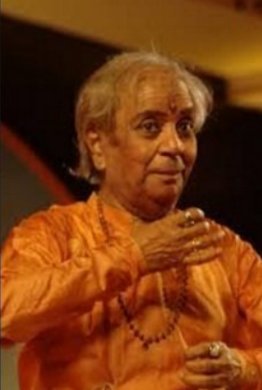 "I am most concerned about the importance of beauty and purity in dance, irrespective of Gharanas. Almost all dancers are losing the real purpose of our age-old traditions, which were mainly for divine joy and peace as their main message. I am sad to see that in the name of experiment and modernity, dancers are taking such liberties that the form itself is being distorted with indecent movements. It is extremely important that we raise voice against such practice; they may do anything in the name of fusion but should not call it Kathak. Even the audiences are becoming so insensitive that they accept everything for fun; the divine art is lost. All Kathak artists of all Gharanas should feel responsible to save the depth and purity of the art. On my part, over the past 20 years (even after my retirement from Kathak Kendra), I have made it my mission to try and reach out to every part of the country where there are Kathak schools, so that a general sensibility towards the aesthetic beauty of Kathak is understood. In this out-reach work - in the form of workshops - as well as in my continuing teaching efforts, I have been working with the tiniest students (about 5-6 years old), and going up to mature dancers and practitioners, to explain the divinity of these ancient arts. I am happy that connoisseurs like Ashok Vajpeyi reckon my cumulative efforts in Kathak today to signify a change-over as fundamental as transition from the BC era to the AD era! All together, Kathak artistes of all Gharanas should feel responsible to save the depth and purity of the art." Kumudini Lakhia, Ahmedabad 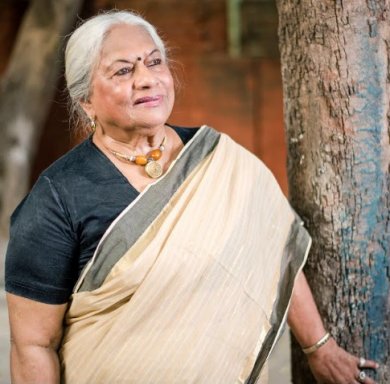 "Kathak has developed through ages in its different Gharanas- the Lucknow, Jaipur and Banaras. Gurus of the Jaipur Gharana travelled to many cities in the North in the earlier times teaching their style of the dance. Later, Pt. Lacchu Maharaj composed for the Bombay film industry with Mughal-e-Azam being a big success, which made his style popular. Pt. Birju Maharaj has been, and remains, the icon of the Lucknow Kathak Gharana and it is natural that all aspiring dancers, regardless of the Gharanas they were trained in, wanted to follow his style. All Indian classical dance forms have different Gharanas. This is a very healthy situation not only in terms of competition but also from exchanging the characteristics of the other Gharanas and enhancing the beauty of the forms. The way Kathak is presented today is very strong in technique both in its Aang and Abhinaya where one can see the influence of different Gharanas. This is also why Kathak has become very popular in the recent times not only pan India but also in the countries abroad." Renowned Gurus and Top Dancers Aditi Mangaldas, Delhi 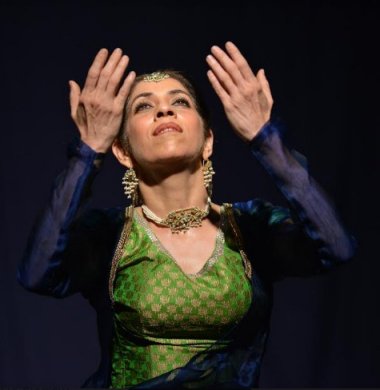 "To me, 'Gharana' is an obsolete concept! In this day and age of instant communication, media and video blasts, this seems a concept that needs to be seen in reference to the times we live in. Scholars need to archive the growth of the various Gharanas, their development and their special features. It is the job of the archivist, the scholar, the theoretician to ensure that each nuance of the various Gharanas are recorded and archived. Their growth and proliferation documented. There maybe a few dancers who feel obliged to want to stick strictly to their version of a particular Gharana...but how will ART grow in such exclusivity? Today, with such access to information, I feel that dancers are gathering various inputs from different Gharanas to suit their own particular creative dance process. To this they add their own artistic input independent of any previously existing Gharana. I feel we should encourage this, encourage inclusivity, and build bridges across the various existing Gharanas, rather than walls. How can a Gharana live in exclusivity in this internet/ YouTube age? There should be a garden of Kathak, fragrant with multiple flowers, colours, age-old trees and new saplings. To me, a great artist is she/he who can access all the knowledge available and then forget it! Then creation would be possible....and this can never be held captive by a single Gharana. Kathak is the Gharana if we must name one!!" Amita Dutt, Kolkata 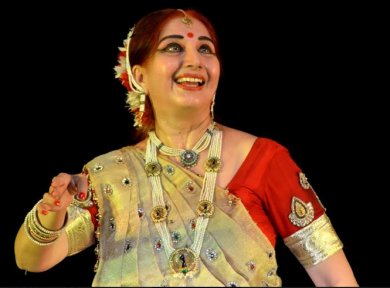 "Kathak, like all other living art forms, has naturally undergone changes over the centuries both as a result of political, social and religious influences and also the innovative contributions of individual artistes, resulting in regional stylistic idiosyncrasies. In earlier times, particularly during the 17th to 19th centuries, when communication was difficult and exposure to each other's development rare, different Gharanas or schools developed as a result of these stylistic peculiarities. Often, the practitioners within these Gharanas, in their arrogance, failed to accept or appreciate the creations of artistes of other Gharanas, rigidly adhering to their own presentations. Now, with the constant exposure to different performances of not only Kathak, but other dance styles, and as a result of the enlightened attitude of modern day dancers, the narrow confines of the Gharanas are gradually disappearing. The artistes have no reservations regarding augmenting their presentations by borrowing or even learning from other Gharanas. The process which started in 1895 when Sundar Prasad, son of the doyen of the Jaipur Gharana, Chunnilal, was sent to learn from Bindadin Maharaj, the maestro of the Lucknow Gharana, continues today. The narrow confines of the Gharanas are being broken and Kathak is today a vast river which welcomes the contributions of all Gharanas and which inspires all performers to create within the parameters of this dance style. The richness and diversity which has strengthened and exalted Kathak today is due to the openness and receptivity of modern day artistes. Kathak should be acknowledged as one complete dance style and all fragmentations and bifurcations should be avoided." Ashimbandhu Bhattacharjee, Kolkata 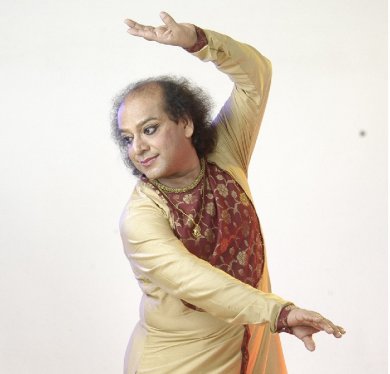 "As a regular practitioner of Kathak for the last forty years, my dance is an amalgamation of the teachings of my gurus of the traditional Gharana, namely, Lucknow and Jaipur. But as an artist, I believe my dance reaches out to everyone and there is only one word: Kathak." Chetna Jalan, Kolkata 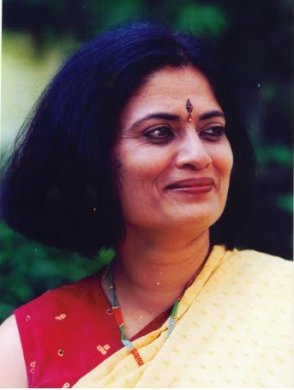 "Kathak Gharana emerged later as part of the beginning of Kathak, mostly through the patronage of Nawabs, kings or rulers of the States. It was considered an important feature to keep musicians and dancers under the ruler's Darbari patronage. Later, it flourished in the British era. Great gurus of different Gharanas emerged: with Kalka Bindadin Maharaj (Lucknow), Sukhdev Maharaj (Banaras), Raigarh king gave us Raigarh Gharana and, of course, Jaipur Gharana - where, like Lucknow Gharana, there are countless gurus. To me, a student should undergo training in one Gharana. Understanding the nuances of one Gharana with its vast repertoire is a must. Later, the students can transgress and undertake impressions of other Gharanas as well as enhance knowledge and build his or her repertoire. Guru of a particular Gharana leaves a stamp on one's form - without that stamp there is a danger of becoming 'formless'. It will be a mish-mash of everything yet not leave a strong impression on the viewers!" Geetanjali Lal, Delhi 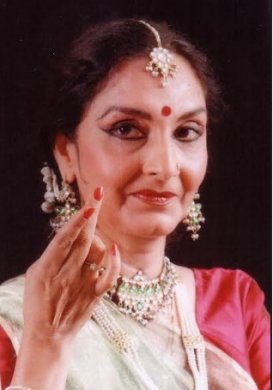 "At a very young age, I was introduced to the term "Gharana", as my father (a classical vocalist) was a disciple of Afteb-e-mausique Ustad Faiyaz Khan of Agra Gharana. There are various Gharanas prevalent among Indian classical music: may it be vocal, instrument or percussion (tabla) and Kathak dance. Each Gharana has maintained and retained the repertoire of the art form till now. Mention of the particular Gharana reflects the names of the great masters known for their contribution to that particular field. Thus, a disciple also gets to learn the history of Kathak by learning the main features of that particular Gharana. I feel the beauty of Kathak lies in the variety of the dance form that it offers in each Gharana. I myself practise Jaipur Gharana but I have been fortunate to learn Banaras and Lucknow Gharanas, too. Each Gharana has its own beautiful compositions and bringing them into one frame of single Gharana is out of question. To end on a lighter note, if today's generation of Kathak practitioners follow YouTube, the 'single Gharana' would be known as YouTube Gharana!" Dr. Malabika Mitra, Kolkata 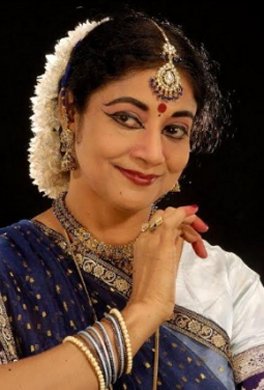 "It is important to explain what Gharana means to me. Learning Kathak from my childhood, I was fortunate to learn under great masters of Jaipur Gharana and then Lucknow Gharana. I feel that the basic difference is the different attitude of people influenced by the surrounding nature. A Gharana was established when a genius artist flourished, got patronized by the local ruler and his style was followed for generations in his family and shishyas (students). In case of Jaipur Gharana, the long bold rhythmic syllables, acrobatic spinning and strong powerful footwork were influenced by the rough extreme nature, the warrior attitude of local people of Rajasthan and patronized by its Hindu king. The inner core of expressional aspect was devotion. In Lucknow Gharana, the intricate sophisticated smaller rhythmic compositions, fluid body movements typically depicts the Nazaqat of Mughal influence and the expressional aspect was dominated by shringar rasa presented through female dancers. The distinctive character of old rhythmic compositions are still important and of immense historical value, but the difference in performing attitude started to disappear once the communication accelerated. A living art form grows through change, modification, adaptation, improvisation and imagination, but within the technical and structural boundaries. In a royal court, it was necessary for a performer to entertain the ruler and his guests, but today a Kathak performer is a representative of one of the great classical dance forms of India. So the responsibility should be much more to stick to the roots while growing and blooming. I believe at present Kathak should be recognized as Kathak without any controversy of Gharana." Munnalal Shukla, Delhi 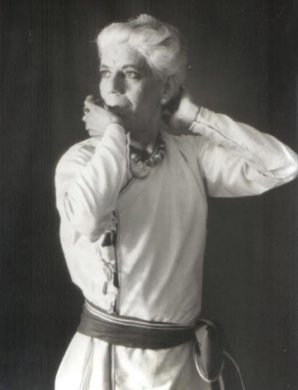 "Jaat paat puchey nahi koi Hari ko bhajey, so hari ka hoi II Hum shikari bhin hein Lekin nishaana ek hai II The ultimate and the supreme objective of Art is beauty. I feel any human being with good thinking and intentions, dedication, an inner quest and practice is the one who possesses true art. Keeping all these viewpoints in mind, I feel the dance of Lucknow Gharana is superlative. The history is witness to the memoirs of the dynastic lineage and ancestry of this Gharana which is also the oldest Gharana of Kathak." Nalini-Kamalini, Delhi 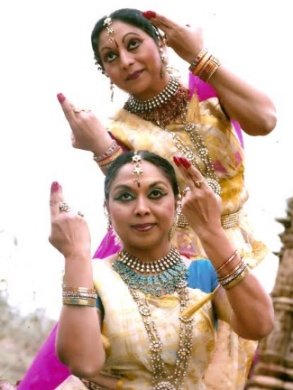 "Universally, it is accepted that Art appeals to others because of its variation. Suppose if all presentation is motivated with the traditional teaching of a particular style then there would be no curiosity of watching different artists as it would be reflecting approximately similar approach. Beauty is novelty; therefore human nature opts for a variety and change. For example, machine loom with single touch of button creates thousand pieces with the same design whereas in handloom, there is variation in each piece though it's made by the same artist. This proves the creativity of an artist and his moods. Kathak dance is imbibed with all the features, techniques and disciplines as described in the Natya Shastra. Kathak during its voyage has observed and adopted many changes and challenges prevailing in the society. In 1983, during a lec-dem in Oxford University, we were questioned by a young scholar who was curious to know about logic behind the different styles of Kathak presentation in different costumes. Repeated enquiries about Kathak inspired us to make a film on Kathak, under the guidance of Guru Jitendra Maharaj of Varanasi Gharana, Voyage Of Kathak by I.L.E.A. (Inner London Educational Authority). We cannot ignore the basics.... complete skeleton of Kathak style is of laya, taal and musical language of ghungroos. Bhav, vichar, abhivyakti are all like ornaments worn according to the individual who is exploring and depicting the subject. Presently, due to the influence of media and technology, purity of Gharana is highly affected; 'institutionalization' of dance schools has affected Guru-Shishya parampara. Students are bound to learn from various gurus of different Gharanas according to their syllabus. Young generations have easy access to copy the style, techniques of legends but they lack in the creative depth and approach, and fail to give aesthetic and impressive flavour in their art presentation. Artists, who are strictly stuck to one Gharana, are able to justify their presentation and captivate the audience, retaining the purity of their style. Therefore, to serve the best of Kathak to the connoisseurs, it is essential to have different Gharanas." Nirupama/Rajendra, Bengaluru 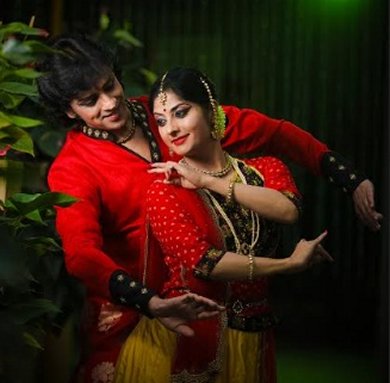 "Having studied Natyashastra both in theory and practice from renowned scholars like Shathavadhani Dr. R. Ganesh and Dr. Padma Subrahmanyam who reconstructed the 108 karanas and going through the movement vocabularies from 4th, 9th, 10th, 11th, 12th chapters of Natyashastra, what we see is that dance (natya) is actually to be considered as a wholesome expression with one main purpose of creation of rasa (aesthetic delight) and pure dance (nritta) is to be done with two energies: Uddhata - powerful, and Sukumaara - graceful. Interestingly, we see this in the two main Gharanas of Kathak: the Lucknow Gharana which features grace and Jaipur Gharana which brings in power. This we have practically experienced when we studied under great masters like Dr. Maya Rao who was the prime disciple of Guru Shambhu Maharaj and Guru Sunder Prasad, the torch bearers of Lucknow and Jaipur Gharanas and techniques which we learnt from Guru Kumudini Lakhia who was also a direct disciple of Shambhu Maharaj, some nuances from Pt Arjun Misra of Lucknow and some beautiful elements from Nahid Siddiqui of Pakistan who is a disciple of Ghulam Hussain, a practitioner of Lucknow Gharana. More recently, intense interactions with Pt Birju Maharaj who is the King of Kathak, we realise that they have all taken art much beyond its origin significantly contributing to the growth of the art with their own artistry, intelligence and creativity. As a practitioner of Kathak for last 30 years, we see how many things have expanded. Earlier, artists had no opportunities to interact with other systems and hence everything was carried out in isolation. In the last few decades with the concept of recording and sharing through AIR, Doordarshan and the onrush of uploads on social media like YouTube , Facebook and Internet, much is accessible to the world. People are able to clearly see strength and limitations of styles and are courageously taking what is best that brings beauty to their art and anything that lends itself for creativity, people see no hesitation in adapting them irrespective of where it came from. Whether the Gharanas want to become one or not, the world is connecting them all together. At such a juncture, purity of schools cannot be a sustaining factor for the art. 1000 years ago a great scholar Kuntaka has said that provincial differences should not stop the development of any art. The same applies to the current question on purity of schools (Gharana). If we look at the essence of Kathak which is the art of story-telling, everything will have to come to that pinpointed focus on creating that impactful "Aha" or a fulfilling feeling in the spectator which our tradition calls as rasa! For an audience, it is immaterial where it came from but what is interesting and enjoyable is to see where the art takes it to! Going back to Natyashastra, if one tunes in to the Rasa concept propounded by Sage Bharata, then one can see how everything can be all inclusive and yet be exclusive." Parwati Dutta, Aurangabad 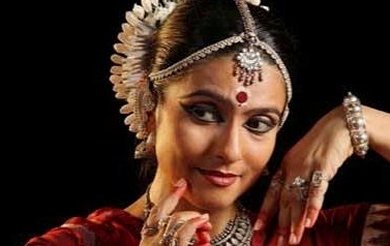 "I think of dance forms as languages. Like any language, Kathak also has a vast spectrum of flavours while having a universal identity. Gliding movements and internalized repose in the vilambit section, fast-paced spins and silvery freezes in intra-forms, rhythmic interplay through footwork - these are some of the salient features of Kathak movement language. While learning this rich art form, we got to witness the varied shades of rendition within the gamut of a particular section of the technical aspect. Imaginative exploration by gurus and performers of different Gharanas and styles of each section has indeed widened the scope of the language and has also enriched the Kathak vocabulary. I vividly remember that during my student days, we could easily identify the guru and Gharana of a dancer by simply analyzing the 'ang' (form of movement) and the compositions. But today in a span of 30 years I found that there has been an active artistic dialogue between practitioners resulting in exchange of ideas, aesthetic approaches and content across Kathak styles. Today, we find that Kathak dancers more or less follow similar ways of using the body, rendering footwork or spins or presenting performances. Even I find similarities in costumes etc that were so unique with each Kathak guru. A majority of younger Kathak gurus or teachers are inspired rather influenced by two great Kathak legends - Pt Birju Maharaj and Guru Kumudini Lakhia. The wide gap and dissimilarities seem to have dissolved and I find a great deal of uniformity or 'universality ' in the Kathak idiom today." Prerana Shrimali, Jaipur 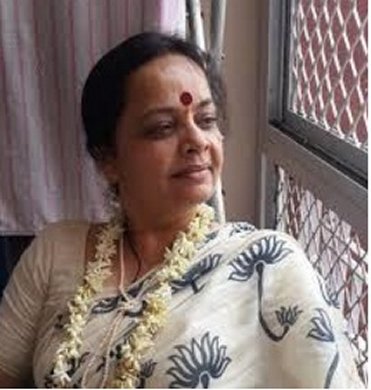 "Being a dancer of a traditional art form, I define Gharana... as identity, legacy, tradition, and name. To me, Gharana is richness as well; like in Kathak from Jaipur Gharana, Lucknow Gharana and Banaras Gharana, all three have their own rich repertoire of syllables, compositions, emphasis and approach towards the talas (rhythm). This difference makes the canvas of Kathak so broad, wide and deep. It creates a rich gestural abstraction in the form and variety of expression. In Kathak, Gharanas are inevitable and I always believe in approaching a thing through many ways, and cannot imagine all the Kathak dancers are doing the same compositions and gestures. Then there would be no art. We cannot kill the art form with sameness. We are already becoming same day by day in the name of globalization and sameness is pathetic. In our times, only artistic spaces can give the fresh air because only here you can see the personal signature in spite of being in the same Gharana and that is the beauty. So I am entirely in favor of different Gharanas in one art form." Rajendra Gangani, Delhi 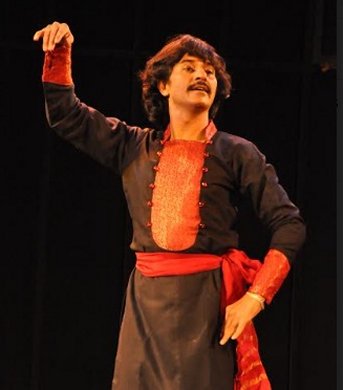 "Gharanas in Kathak at one point of time had great relevance. It basically denoted the emphasis that each school laid on certain aspects of the dance form. The development of the Gharanas was influenced by the socio-religious and political developments during a particular time and at a certain place where Kathak was flourishing. As time progressed the boundaries that defined these Gharanas blurred. The dancers' mindset, the audiences' choice and dialogues with other dance styles and cultures greatly changed the perception of Gharanas and in today's world, I think each dancer is a Gharana in himself, each one trying to create a niche for himself with his unique style and thought. The word Gharana today is just adherence to a lineage. The training today is more performance centric and performances more audience centric than sticking to a particular style of Kathak. Hence, I believe in today's world there are numerous Gharanas, each dancer finding, perfecting and presenting his own style." Saswati Sen, Delhi 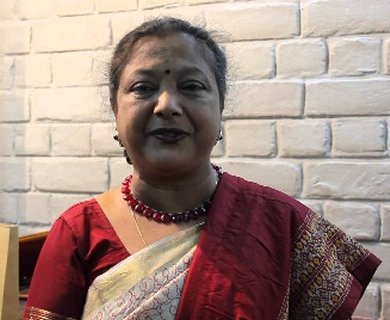 "I do not think that it is necessary to have one single Gharana in any form of arts. The beauty lies in diversity - - the difference in approach, contents, presentations, emphasis in every style, is just like the various shades and hues of every color. However, in respect to Kathak, the beauty and richness in Pt Birju Maharaj's style is so complete and attractive that every Kathak dancer today is influenced and inspired by him. His discipline in training and aesthetic sensibility along with the rich content has overpowered everyone. His creativity within the parameters of the style has enriched the work of his ancestors and thereby the Lucknow Gharana. While he is proud of his Gharana, he respects the other Gharanas and encourages their work. As for the uniformity in style (single Gharana), it is important that all Kathak dancers (of various Gharanas) should work towards the neat presentation, aesthetic beauty, elegance and divineness (purity) in their approach and not focus only on speed, technique and loud showmanship, which then becomes tamasha (frivolous) and takes away the real art which should touch the soul." Shovana Narayan, Delhi 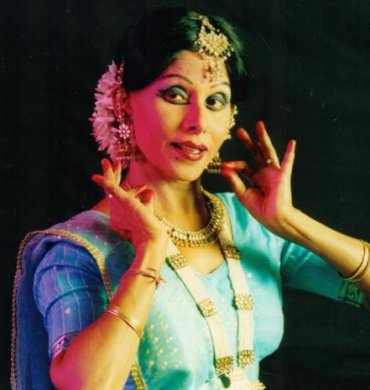 "At the time in late nineteenth century, when the present Gharanas came into being, there were clear strains of differences between the various Gharanas. Most of the differences could be traced to the environment in which they evolved and the kind of patronage received. Today, that kind of patronage is no longer there. Further, there is concentration of stalwarts of various Gharanas especially in Delhi. This has facilitated, tangibly and intangibly, a lot of give and take, so much so that it has led to blurring of boundaries between the various Gharanas. This is especially visible in the teyyari ang (rhythmic aspects), Ang Sanchalan and manner of presentation. It is in the manner of taking chakkars (pirouettes), that the Gharana have continued to maintain their individuality. I do remember an article in the eighties by one of our esteemed journalists asking whether it was not time to acknowledge 'Delhi Gharana' of Kathak, considering the blurring of boundaries between Jaipur and Lucknow Gharana. While there has been 'uniformisation' and 'homogenisation', yet it is equally true that individual ethos and identity can never be eschewed for each artiste brings with him/her, his/her own flavour in delineation bespeaking the artiste's forte, depth and gravity in dance thus colouring the performance with his/her own individual stamp. Finally, however and with whatever emphasis an artiste performs, he or she is performing Kathak that is a canvas that affords several nuances of delineation and expression." Uma Dogra, Mumbai 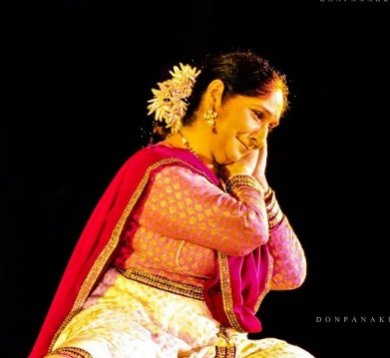 "The noble and far-reaching ideals of a great mentor invariably cannot be achieved within a single life time. Disciple must carry on the Mentor's vision and continue the ongoing endeavour to make it a reality." - - Dr. Daisaku Ikeda "A Gharana is an outcome of the cumulative inputs and creative expressions given by the gurus of the time when it was formed. For me, a Gharana is made by the guru and not the other way around. Bharatanatyam as a dance form has beautiful branches of expression...what Rukmini Devi brought to it has moulded artists speaking the same language with a different approach to the subtext of expressions and body language. Similarly, what Balasaraswati lent to the art form has taken it to yet another plane of being. Kathak originally had only two main Gharanas: Lucknow Gharana and Jaipur Gharana. Later, the Banaras Gharana came into being and today we also have the Raigarh Gharana...this is an ongoing process. Every guru lends his/her creative distinction, which draws inspiration from the spatial, cultural and historical entity of the region. Thus, I see it very clearly as a beautiful, evolutionary, ongoing process." Dr. Uma Sharma, Delhi 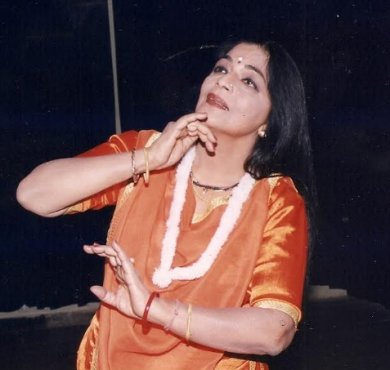 "Kathak, as is generally acknowledged, comprises of various Gharanas, such as, Jaipur Gharana, Lucknow Gharana, Raigarh Gharana and Benares Gharana, etc. However, I feel that after studying and training under various gurus of Lucknow and Jaipur Gharana, they have same techniques of Toda, Tukda, Thaat, Aamad, Parans, Gat Bhav - (footwork) etc. While Shambhu Maharaj of Lucknow Gharana stressed on Gat Nikas, Tatkar Abhinay, particularly Thumri bhav - Jaipur Gharana stressed on kavitt, pure techniques and footwork. Banaras Gharana also laid stress on kavitt. However, in Gharanas, there may be subtle differences and nuances in various presentations. Basically they are same in content and belong to the same family tree of Kathak nritya. I have seen various Gurus like Shambhu Maharaj, Lachhu Maharaj, Achhan Maharaj, Sundar Prasad, Birju Maharaj, Sitara Devi and Roshan Kumari and observed the way they presented Kathak style and Ang. Their ways of presentation were different but the technique remained the same, that is, Kathak." Vaswati Mishra, Delhi: 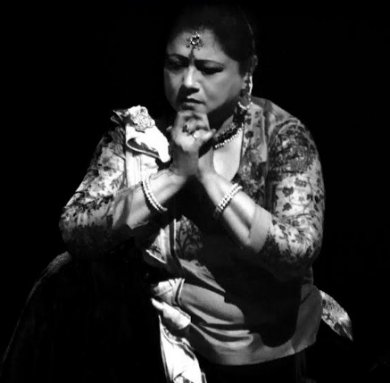 "My first reaction was 'Wow!' Why has this question come up suddenly? Is the 'dilution' so obvious that it is 'disturbing' even to those, who are not directly involved in the practice, or is it 'just another topic'? For me, it is of real concern!! I grew up admiring Roshan Kumari, Gopi bhaiya, my own guru and so many such stalwarts and every time the beauty that struck me the most was their unique approach towards the form. Be it the 'spins' ... the 'stances'... the 'bol' ... everyone had consistently delivered different flavour. My emphasis on 'consistent' is purposeful; 'the consistency' in their approach showed their 'belief' which they carried forward with pride and confidence. To me, the question, "Can Kathak have one Gharana?" is like asking "Can we just have 'one language' without the dialects?" Imagine if we are deprived of the dialects like Braj, Awadhi... "Meri zindagi to berang si ho jayegi ...."!! So, to me, it is important to maintain the form with authenticity and distinct diversities of each Gharana. But I have another question, which is even more serious and I take the liberty to mention it here. Are we really concerned that Kathak, the form, is preserved and transferred to the future ambassadors with its dignity, gravity and classicism?" Brilliant Youngsters Abhimanyu Lal and Vidha Lal, Delhi 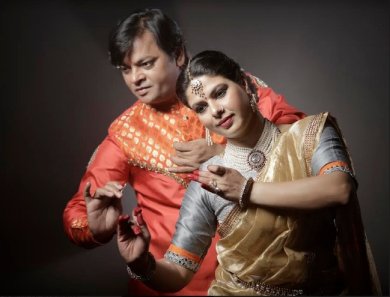 "To become a good Kathak dancer, a student should not look for any particular Gharana but a great guru - - he or she may be a representative of any Gharana. In the initial training, a student should not bother about the Gharana but should concentrate to perfect the basics of the art. Today, we all are facing commuting problems. A student of Kathak dance looks for a teacher who lives nearby rather than selecting a particular Gharana guru." Gauri Diwakar, Delhi 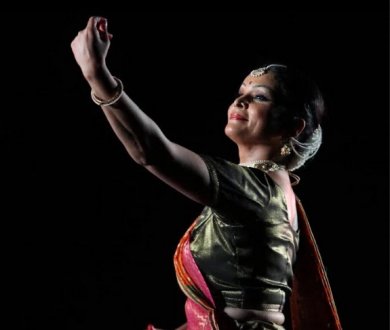 "I am not a great believer of the Gharana system. Gharana in Kathak in my view is now more of a theoretical concept. My initiation in Kathak took place in Jamshedpur. For first ten years, I did not even know the name of the Gharana I was initiated into. It actually does not matter one belongs to which Gharana. Now dancer from Lucknow Gharana does as much Taiyaari as Jaipur Gharana dancer focuses on Nazakat. The thin line of Gharanas is merging and we can have only good Kathak dance and bad Kathak dance." Vishal Krishna, Banaras 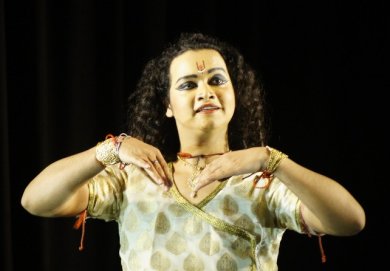 "Kathak is canvas of different colours. The Lucknow Gharana, Jaipur Gharana and Banaras Gharanas have all played an important role in reviving this beautiful Indian classical dance form. The Lucknow Gharana captures the subtle nuances and associated aesthetics in the movements beautifully; the Jaipur Gharana lays significance on complicated compositions and vigorous foot work and the Banaras Gharana is known for its Natwari compositions and strong mythological influence in performances. If all Gharanas were merged into one, we would lose the interpretations and repertoire built by the great gurus of each Gharana." It would appear from the above responses that an overwhelming number of the exponents are in favour of retaining the diversity of Gharanas, although a few have expressed themselves supporting integration across the board. Given the general verdict - even if there is no consensus - it does seem that "let a hundred flowers bloom" should remain the motto. Kathak sparkles today and should continue to do so - - Gharana or not!  Dr. Utpal K Banerjee is a scholar-commentator on performing arts over last four decades. He has authored 23 books on Indian art and culture, and 10 on Tagore studies. He served IGNCA as National Project Director, was a Tagore Research Scholar and is recipient of Padma Shri. Responses * Saddened - can we not move on? Do we need to regurgitate the same old question time and time again? Is the art not more important than the school? Rather than focus on something so trivial, would it not be better to focus on how to nurture growth. I fully appreciate the argument to be able to distinguish the nuances of each school, however should we do just this and not look at evaluation of the art form? In the dull frenzy to ascribe authenticity and distinguishable characteristics that 'may' help younger dancers differentiate between different schools, we are not moving away from the key goal - to create good art and avoid mediocrity. - Subodh Rathod (on Facebook - July 18, 2017) * What a wonderful article and such an interesting subject. Thank you so much for including me in this interview. I was specially pleased as both my Gurus were part of it and so was my student Gauri. The “pravah” of dance continues :) - Aditi Mangaldas (July 19, 2017) * A beautifully written piece. Gratitude towards all gurus and seniors who have contributed in refining our sensibilities and deepest thanks to you for giving me an opportunity to share my observations. - Parwati Dutta (July 19, 2017) * It was enriching to read the views of all the Gurus and performers. Thank you for such a thoughtful article; it was an honor to be a part of it. - Nirupama & Rajendra (July 19, 2017) * Let me congratulate you on a very well written article that brings out wide range of views in the context of gharanas. Your article has initiated a healthy discussion. - Shovana Narayan (July 20, 2017) Post your comments Please provide your name and email id when you use the Anonymous profile in the blog to post a comment. All appropriate comments posted with name & email id in the blog will also be featured in the site. |